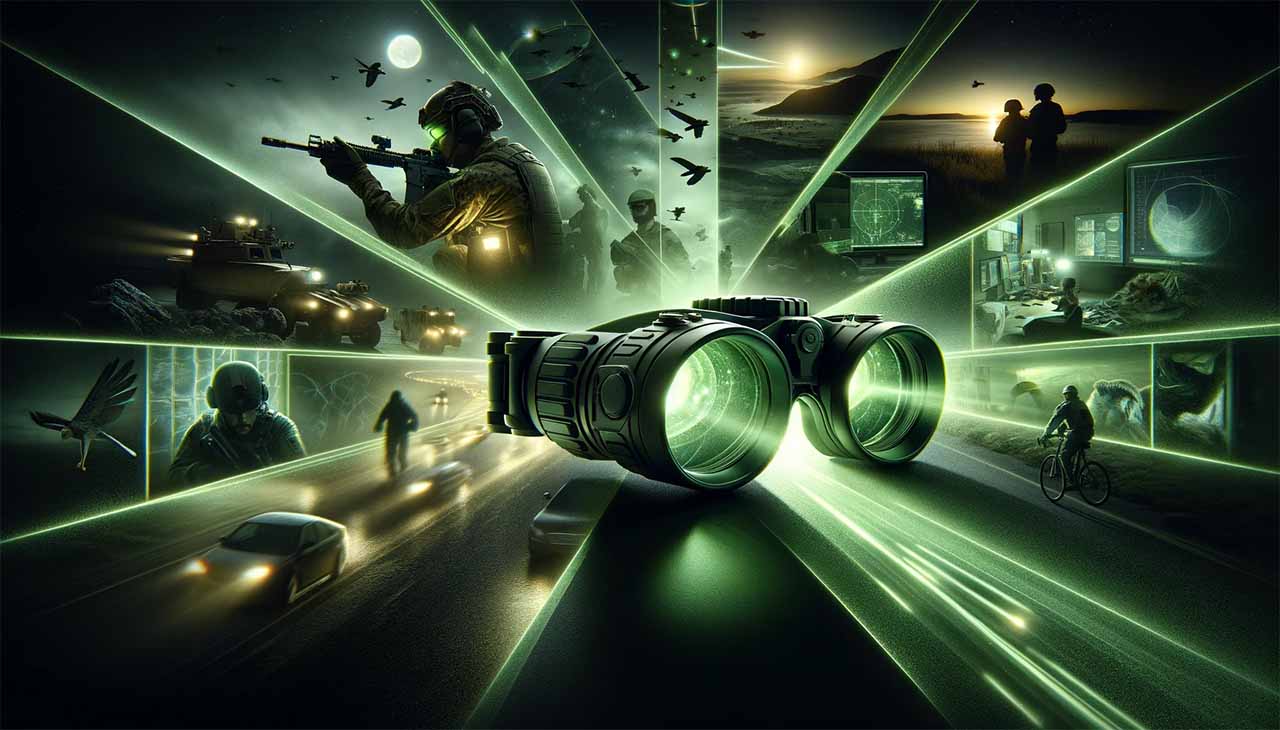Optical Mastery: Breaking Barriers in Night Vision Capabilities
Night vision capabilities have become an essential cornerstone in various fields, significantly impacting our ability to operate in low-light environments. From military operations executing covert missions under the cloak of darkness to wildlife researchers observing nocturnal creatures, night vision has opened up a world that was previously out of our reach. However, despite the tremendous advances, current night vision technology still poses various limitations and challenges. The struggle with compromised image quality, high power consumption, and the need for bulky equipment are some of the barriers that we continue to grapple with. In this document, we delve into the intricacies of these challenges and explore how ongoing research and innovation can push the boundaries of what is currently achievable in night vision technology.
Evolution of Night Vision Technology
The inception of night vision technology dates back to World War II, with the first practical devices being developed by the German military. These rudimentary systems were largely infrared-based, requiring a separate IR light source to function. The technology was further refined during the Cold War, with notable advancements in image intensification.
Image intensification technology, commonly referred to as Generation I night vision, marked a significant leap forward. It operates by amplifying available light—from stars, the moon, or ambient artificial lighting—thus enabling better visibility in dark conditions. This advancement was a game-changer as it eliminated the need for an external IR source, making night vision devices more practical and versatile.
The introduction of thermal imaging technology added a new dimension to night vision capabilities. Unlike image intensification, thermal imaging doesn’t rely on light at all; instead, it detects the heat emitted by objects, animals, or people and translates it into an image. This meant that even in pitch darkness or obscured conditions such as fog or smoke, thermal imaging could provide a detailed view of the environment.
Each of these advancements has made night vision increasingly more effective and adaptable to a variety of conditions, setting the stage for the cutting-edge technologies we see today.
Overcoming Limitations: Optical Innovations
As we continue to navigate the intricate landscape of night vision technology, advancements in optical innovations are progressively overcoming existing limitations. A key area of development lies in refining image intensification sensors. Modern variants of these sensors exhibit enhanced sensitivity, capturing even the faintest traces of light in their environment, thereby drastically improving visibility in low-light conditions.
Moreover, the integration of digital image processing techniques has taken the capabilities of these devices a notch higher. These techniques include advanced algorithms designed to reduce noise, adjust contrast, and fine-tune image sharpness, resulting in a clearer, more defined visual output.
The evolution of night vision technology has also seen substantial improvement in terms of range and resolution. High-definition sensors and improved lens designs have extended the viewing range of night vision devices, simultaneously enhancing the level of detail that can be observed even at great distances. These strides in technology are opening up new vistas, pushing the boundaries of what is achievable in night vision capabilities.
Emerging Technologies
Augmented Reality for Enhanced Situational Awareness
In the realm of night vision, augmented reality (AR) is emerging as a game-changing technology. By overlaying digital information onto the real world, AR can provide enhanced situational awareness in low-light or night-time operations. This can be particularly beneficial in challenging environments, offering the user crucial data about their surroundings, potential threats, or objectives.
Machine Learning Algorithms for Real-Time Object Recognition
Another promising development is the incorporation of machine learning algorithms into night vision systems. These algorithms can analyze the infrared or thermal imaging data and accurately identify objects or individuals in real time. This introduces an entirely new level of intelligence to night vision technology, enabling not just visibility in the dark, but also instant recognition and analysis of what is being observed.
Integration with Drones and Autonomous Systems
A further leap in night vision technology comes with its integration into drones and other autonomous systems. Equipped with advanced night vision capabilities, these unmanned systems can perform surveillance, reconnaissance, or search and rescue operations in darkness, vastly expanding their utility and effectiveness. This integration paves the way for myriad applications, from military missions to wildlife observation and emergency response.
Future Prospects and Possibilities
Looking ahead, the combination of these technologies—AR, machine learning, and autonomous systems—presents an exciting future for night vision. As these technologies continue to evolve and synergize, we could see night vision capabilities becoming increasingly intelligent, versatile, and integrated into our daily lives. From smart glasses that provide night vision to the average user, to autonomous vehicles that can navigate safely in the dark, the possibilities are virtually limitless.
Applications and Impact
Night vision technology is not limited to any specific sector, its adaptability has ignited a revolution across various fields. Here, we outline some of the key areas benefiting from the advancements in this technology.
Military and Defense Operations
Night vision plays a crucial role in military and defense operations, enabling tactical advantages during night-time operations. It assists in surveillance, reconnaissance, and target acquisition, even under low-light or obscured conditions. The integration of AR and machine learning further enhances these capabilities, providing real-time data overlay and object recognition.
Law Enforcement and Surveillance
In law enforcement, night vision technology aids in surveillance activities, crime scene investigations, and tactical operations carried out in the dark. The ability to identify suspects or objects in low-light conditions can make a significant difference in law enforcement outcomes.
Search and Rescue Missions
Night vision is invaluable in search and rescue missions, particularly those conducted in challenging or low-visibility environments. By integrating it with drones, rescuers can effectively navigate and locate individuals even in complete darkness, significantly improving the chances of a successful rescue.
Wildlife Observation and Conservation
Night vision technology has revolutionized wildlife observation and conservation efforts. Researchers can now observe nocturnal animals in their natural habitat without disturbing them with artificial lighting. Additionally, thermal imaging can assist in detecting and monitoring wildlife, contributing to conservation efforts.
Advancements in Medical Imaging
In the field of medical imaging, night vision technology – particularly infrared imaging – is opening new possibilities. It can be used to detect heat variations in the body, which can indicate inflammation or vascular activity, potentially aiding in early disease detection.




